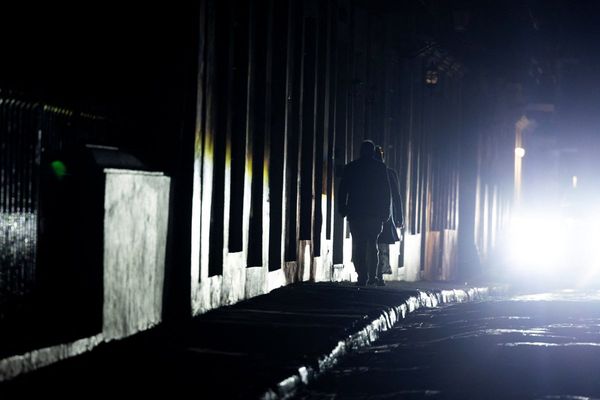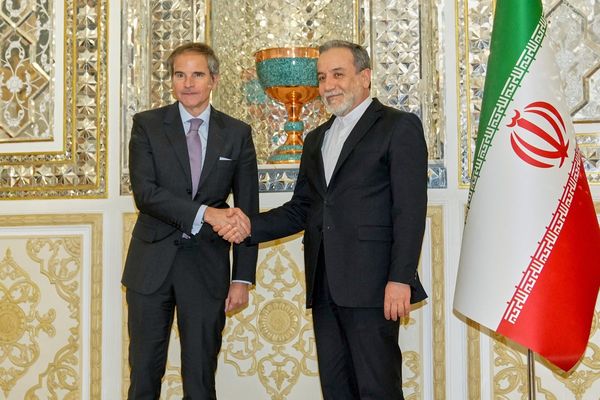
Twenty members of India’s armed forces have been killed in a “violent face-off” with Chinese soldiers on their disputed Himalayan border in the worst military crisis between the two countries in nearly 60 years.
The deaths are the first loss of life in the border area since 1975, and come amid a renewed dispute between the two countries in recent weeks. Indian and Chinese soldiers, who often do not carry weapons in the area to avoid escalating conflicts, have brawled, detained each other and deployed forces and equipment in the western Himalayas in recent weeks.
“During the de-escalation process under way in the Galwan Valley, a violent face-off took place yesterday [Monday] night with casualties on both sides,” the Indian army said in a statement on Tuesday afternoon Delhi-time, initially confirming three deaths.
It said in a later statement a that further 17 Indian troops “critically injured in the line of duty at the stand-off location and exposed to sub-zero temperatures in high altitude terrain [had] succumbed to their injuries.”
The army said “senior military officials of the two sides are currently meeting at the venue to defuse the situation” and it was “firmly committed to protect the territorial integrity and sovereignty of the nation.”
Indian government sources said several troops were still missing and the death toll was likely to grow. The Guardian understands that fighting broke out at dusk on Monday when an Indian patrol unexpectedly encountered Chinese forces on a narrow ridge while on a patrol.
An Indian commanding officer was pushed and fell into the river gorge, sources said, leading to reinforcements being called and up to 600 troops from both armies fighting hand-to-hand, with stones and iron rods as weapons, until late in the night, with several men from both sides falling to their deaths. No shots were fired.
The United States - which has strained relations with China but sees India as an emerging ally - said it is hoping for a “peaceful resolution”, and that it was monitoring the situation closely.
Tensions between the two sides had been escalating since late April, after China’s encroachment of thousands of troops into disputed territory along the Line of Actual Control (LAC), who set up camps and brought over artillery and vehicles and caught India off-guard. Chinese soldiers ignored repeated verbal warnings to leave, triggering shouting matches, stone-throwing and fistfights in key border areas, but on 6 June there was a meeting of senior Indian and Chinese military commanders and a commitment to disengagement was made on both sides.
However, tensions remained high as Chinese troops had still not withdrawn from certain areas of disputed territory, including Galwan Valley. Monday’s fatal clashes happened close to Patrolling Point 14 in the Galwan Valley, near the LAC. Chinese PLA troops had reportedly begun to retreat east from the area as agreed, but then turned back and were then confronted by Indian troops patrolling the area.
Brahma Chellaney, Professor of Strategic Studies at the New Delhi-based Centre for Policy Research described the fatal escalation as a “watershed moment,” adding: “On a political level, China-India relations will not be the same again.”
The two countries have been locked in a decades-long stalemate over their competing claims to long, uninhabited stretches of the mountain range. China claims more than 90,000 sq km in the eastern Himalayas disputed by Delhi and another 38,000 sq km in the west.
The neighbours fought a full-scale war in the area in 1962, and tensions have flared into armed confrontations several times since, including in 2013 and again four years later. The recent encroachment by China further into disputed territory is believe to be in response to an Indian building spree of new roads, airstrips and infrastructure in the border area, which will ease access and movement for the Indian military. Recently China has also been more aggressive in its contested frontiers such as the South China Sea.
A statement by the Indian Ministry of External Affairs placed the blame firmly on China, stating that China had “departed from the consensus to respect the Line of Actual Control (LAC) in the Galwan valley” and that as a result “on 15 June, 2020, a violent face-off happened as a result of an attempt by the Chinese side to unilaterally change the status quo there.
“Both sides suffered casualties that could have been avoided had the agreement at the high level been scrupulously followed by the Chinese side,” added the statement.
In contrast, Zhang Shuli, the Chinese army’s commander in the western theatre, said in a statement that on Monday evening Indian forces had crossed the “control line [and] deliberately launched provocative attacks causing both sides to engage in intense physical conflict that resulted in casualties”.
He said the alleged incursion was in breach of agreements and understandings between the two sides and “hurt the feelings of the people” in both countries.
“We call on the Indian side to restrict its frontline soldiers, immediately stop all infringement of rights and provocative actions against China and return to using dialogue to resolve disputes,” Zhang said.
Prof Phunchok Stobdan, a former ambassador who served in the National Security Council Secretariat, said the fatal conflict was likely due to “a mismanagement of the disengagement process by the local level commanders”.
“There were no higher-level commanders involved in this, the instruction was to de-escalate,” he said. “But this tension has been building up for quite some time between the soldiers. There were grudges against each other and so I think, on the troop level, both sides have not maturely handled de-escalation.”
However, he emphasised that neither India or China had any interest in the skirmish escalating into wider conflict. “I think that despite this incident, de-escalation will continue,” said Stobdan.







